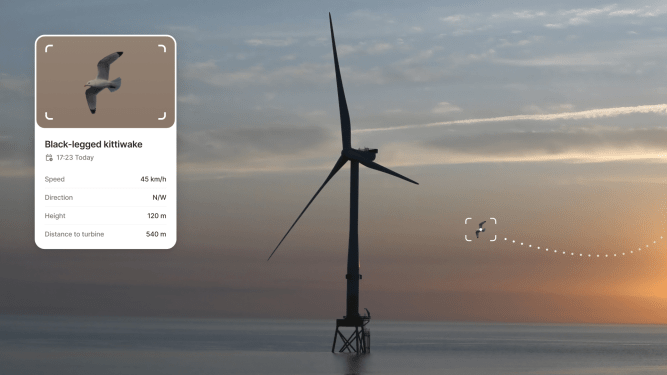Wind energy is the largest source of renewable energy in the United States, according to the U.S. Energy Information Administration. However, wind farms come with an environmental cost as wind turbines can wreak havoc on bird populations. Meet Spoor, a startup that uses artificial intelligence (AI) to help wind farms mitigate this risk.
The Problem with Wind Farms
Wind farms are massive installations of wind turbines that generate electricity from the wind. While they are an essential source of renewable energy, their impact on local wildlife is often overlooked. One of the significant concerns is bird strikes, where birds collide with turbine blades and die or are injured. This issue is particularly pressing for endangered species.
Government Regulations
Government regulations in several countries require wind farms to monitor and track their impacts on birds. In areas with endangered species, wind farm operators must take extra precautions to minimize the risk of bird strikes. However, prior to AI-enabled computer vision, there wasn’t a good way to do this effectively.
The Solution: Spoor’s AI-Powered System
Spoor is a software that uses machine learning to detect birds on video while also recording their movement and predicting their flight patterns. Co-founder and CEO Ask Helseth told TechCrunch that the system offers a significant improvement over traditional methods of monitoring bird populations.
"The expectations from regulators are growing, but the industry doesn’t have a great tool," said Helseth. "A lot of people go out in the field with binoculars and trained dogs to find out how many birds are colliding with turbines."
How Spoor Works
Spoor’s system continuously monitors sites, providing real-time data on bird populations. Wind farm operators can use this information to better react to bird migration patterns and slow or stop wind turbines when avian activity is expected to be heightened.
Companies can also use the tech to monitor potential sites for wind farms and evaluate their risk to local avian populations. This approach can help identify areas with high bird traffic, reducing the likelihood of bird strikes.
Spoor’s Competitive Advantage
Helseth said that Spoor’s system is particularly effective because it uses computer vision to detect birds in real-time. "Wind farms are quite huge, many hundred square kilometers, and trying to use computer vision to basically monitor the air is an interesting technology challenge," he explained.
"We needed to create a scalable technology that can detect birds. It’s kind of a novel use of computer vision and our own data pipeline."
Funding Round
Spoor recently raised $4 million in seed funding from investors, including Futurum Ventures, Nysnø, and Superorganism. The round also included Ørsted Ventures, the venture arm of Ørsted, one of the world’s largest wind farm operators.
The Future of Wind Energy
Spoor’s AI-powered system has the potential to revolutionize the way wind farms operate. By reducing the risk of bird strikes, Spoor can help wind energy become a more sustainable and environmentally friendly source of electricity.
As Helseth said, "We believe that our technology can make a significant impact on the industry and help reduce the environmental footprint of wind farms."
Conclusion
Wind energy is an essential component of a renewable energy future. However, its impact on local wildlife must be addressed to ensure that it remains a sustainable source of electricity. Spoor’s AI-powered system offers a promising solution to this problem, providing real-time data on bird populations and enabling wind farm operators to make informed decisions about their operations.
With the support of investors like Futurum Ventures, Nysnø, and Superorganism, Spoor is poised to become a leading player in the renewable energy industry. As the demand for clean energy continues to grow, Spoor’s technology will play an increasingly important role in reducing the environmental impact of wind farms.




